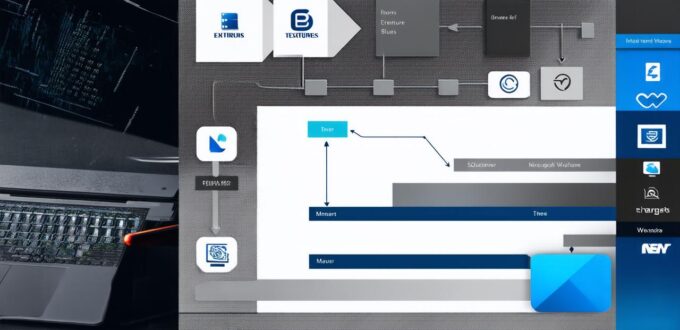As technology continues to advance, software has become an integral part of our lives, from the applications on our phones to the systems that power businesses.
What is Software?
Software can be defined as a set of instructions that tell a computer to perform specific tasks. These instructions are written in a programming language and executed by a computer’s processor. Software can range from simple programs that automate basic tasks, such as calculating taxes or sending emails, to complex systems that manage data and perform complex calculations.
History of Software
The history of software dates back to the 1940s when the first computers were developed. Early software was primarily used for scientific research and military applications. In the 1950s, software began to be used in businesses, with the development of word processors and spreadsheets. The advent of personal computers in the 1980s led to a boom in software development, with the creation of games, utilities, and productivity tools.
Types of Software
There are several types of software, including:
- Operating Systems: These are the underlying systems that manage computer hardware and resources. Examples include Windows, macOS, and Linux.
- Productivity Software: This includes applications such as word processors, spreadsheets, and presentation software. Examples include Microsoft Office and Google Docs.
- Games and Entertainment Software: These are programs designed for entertainment purposes, including video games and virtual reality experiences.
- Multimedia Software: This includes applications that create and edit digital media, such as music and video editing software.
- Scientific and Engineering Software: These are programs used in scientific research and engineering design, such as CAD and simulation software.
- Business Software: These are programs designed for specific business needs, such as customer relationship management (CRM) and enterprise resource planning (ERP) software.
Key Concepts in Software Development
There are several key concepts in software development that are essential for understanding how software works. These include:
- Algorithms: An algorithm is a set of instructions that tells a computer to perform a specific task. Algorithms form the foundation of all software programs and are used to solve problems and make decisions.
- Programming Languages: A programming language is a set of rules that define how code can be written and executed by a computer. There are many different programming languages, including Python, Java, C++, and JavaScript.
- Data Structures: Data structures are ways of organizing data in a computer program. Examples include arrays, linked lists, and trees.
- Object-Oriented Programming: Object-oriented programming is a programming paradigm that uses objects to represent real-world entities and their behaviors. It is a popular approach for developing software applications.
- Agile Software Development: Agile software development is an iterative approach to software development that emphasizes collaboration, flexibility, and continuous improvement. It is widely used in modern software development.
- DevOps: DevOps is the practice of combining software development and operations into a single, continuous process. It is designed to streamline software development and delivery, improve collaboration between development and operations teams, and reduce the time to market for new software applications.
Real-World Examples in Software Development
Software development is a complex field that requires practical experience to truly understand its concepts and principles. Here are some real-world examples of software development projects:

-
Developing an E-Commerce Website: An e-commerce website involves designing a user interface, writing code to implement the website’s functionality, and testing the website on different devices and browsers. This process requires knowledge of programming languages such as HTML, CSS, and JavaScript, as well as experience with web development frameworks like Shopify or WooCommerce.
-
Building a Mobile Application: Developing a mobile application involves creating a user interface, writing code to implement the app’s functionality, and testing the app on different devices and operating systems. This process requires knowledge of programming languages such as Swift or Java, as well as experience with mobile development frameworks like React Native or Flutter.
-
Debugging Software: Debugging software is an essential part of software development. It involves identifying and fixing errors in code, testing the software to ensure that it works correctly, and documenting the fixes for future reference. This process requires careful attention to detail and the ability to work under pressure.
-
Collaboration in Software Development Teams: Collaboration is essential in software development teams. Developers need to work together effectively to ensure that the software meets the needs of the end-users. This requires strong communication skills, the ability to listen actively, and the willingness to compromise when necessary.
